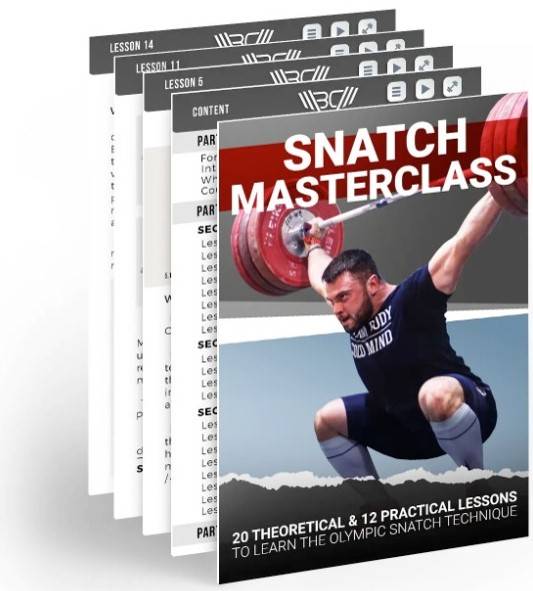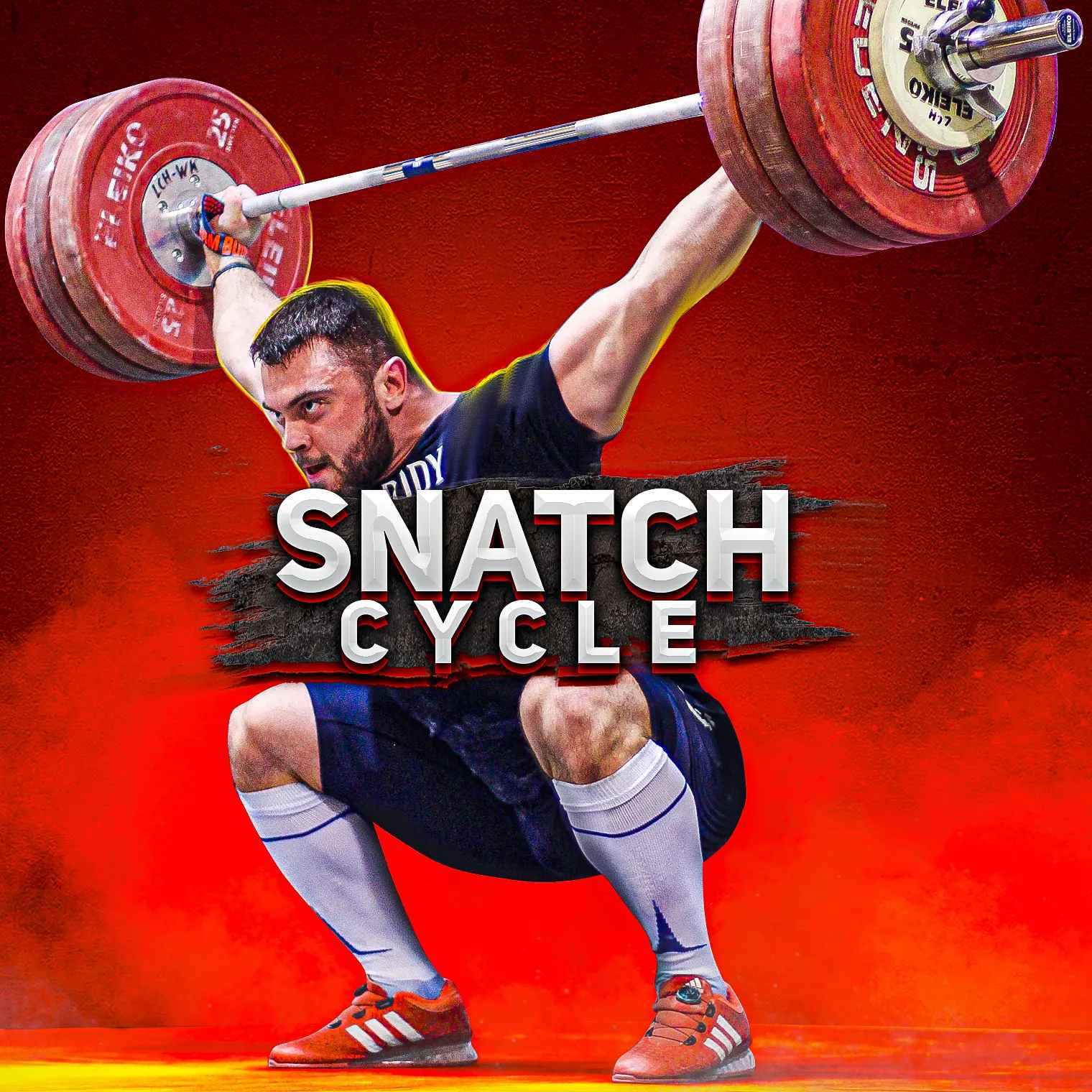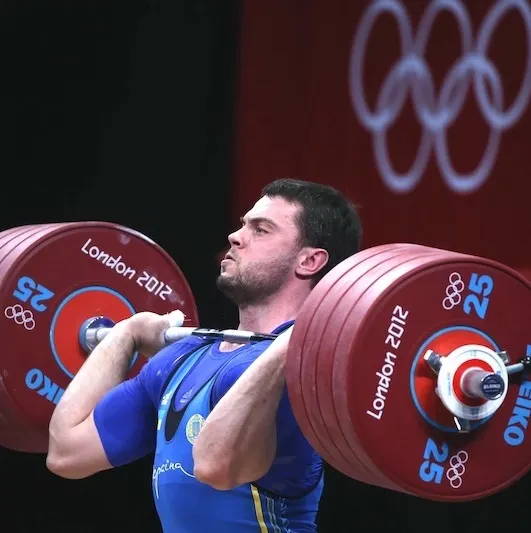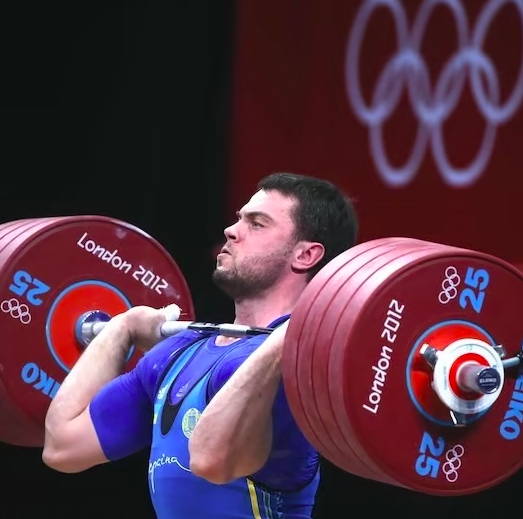The snatch is one of two main lifts in Olympic weightlifting. According to the competition rules, an athlete must lift a barbell in one movement from a platform to the overhead position.
As a training exercise, the snatch is used in the preparation process. Both weightlifters and athletes from other sports perform it to improve coordination, strength, speed, flexibility, power, and mobility.
What is a snatch? – The Olympic barbell snatch is a weightlifting exercise that involves lifting a barbell from the ground to an overhead position in one fluid motion. It is a complex, full-body movement that requires coordination, power, and strength from a range of muscles.

The Olympic snatch is a weightlifting movement that has been included in the Olympic Games since the first modern Games were held in Athens, Greece in 1896.
The early Olympic snatches were often performed with a split technique, where the lifter would split their legs apart to catch the barbell. However, this technique was later replaced by the squat technique, where the lifter catches the barbell in a full squat position.
Olympic weightlifting snatch exercise is power in its purest form. An athlete needs all physical qualities for this exercise. Moreover, all highly-coordinated movements are not easy to understand. Therefore, it is also one of the most challenging exercises to learn.
How To Do A Snatch – Phases And Snatch Technique
1. Starting Position
(0:00-0:40 on the video above)
Approach a barbell, set up the shoulder-width stance, and place the barbell over the toes’ phalanges. Use the snatch grip. At this stage keep the barbell as close to the shins as possible.
Open the chest and arch the back, stretch and relax the arms. Maintain the shoulders over the bar, and push the knees out in line with the toes.

2. First Pull
(0:40-1:11 on the video above)
In this phase the lifter pulls the barbell from the floor to the mid-thigh position. During the first pull, the lifter focuses on generating power and maintaining proper body positioning. This involves keeping the back straight, driving through the legs, and utilizing the hips and legs to initiate the upward movement of the barbell.
The first pull sets the foundation for a successful snatch lift by establishing momentum and positioning for the subsequent phases. It is important to maintain the center of gravity in the middle of the foot, shoulders over the bar, and arms relaxed.

3. Second Pull
(1:11-1:20 on the video above)
The 2nd Pull begins after finishing the 1st Pull and lasts until the moment when the legs and body are fully extended. This movement achieves maximal vertical force and acceleration of the barbell, due to ankle, knee and hip extensions.
At the end of the 2nd pull, the heels will leave the platform, the lifters body will be fully extended, and the bar should now begin to travel up with an almost vertical trajectory.

4. Power Position
(1:16-1:19 on the video above)
At the moment the bar reaches the power position (in the groin), straighten the knees and hips powerfully and direct the elbows upwards. The main goal of this stage is to pass a vertical explosive impulse from the body to the bar.

5. Turnover
(0:40-1:11 on the video above)
In this phase, the lifter transitions the barbell from its upward trajectory into the overhead position. This involves quickly rotating the wrists and elbows under the bar while maintaining a strong, stable core.
The lifter needs to be fast and precise to make sure the barbell moves smoothly into the receiving position without losing balance or control. The goal of this phase is to effectively “turn over” the barbell and prepare to catch it securely over the head.

6. Receive the Bar Overhead (Catch)
(1:31-1:47 on the video above)
The goal of this phase is to stabilize the center of gravity and balance. Keep the back tense, shoulders and elbows fixed.

7. Recovery
(1:47-1:53 on the video above)
Never rush to stand up. Both at a workout or competition, an athlete must be confident that they feel and control a bar and every body part. Even top athletes have failed some attempts and lost medals because they rushed and began standing up too soon. Practice good snatch habits: patience and endurance are essential at this stage.
At competitions, you may often hear coaches shouting “reach up” and “hold” to make an athlete push a bar up and pull their shoulders towards the ears to provide the highest stability. When everything is finished, an athlete can stand up and wait for a signal to lower a barbell and get a “good lift”.

More Snatch Tutorial Videos
1. Simple Snatch Progression (Time: 3 minutes)
2. Detailed Video Tutorial (Time: 13 minutes)
5 Tips on Improving the Snatch by Oleksiy Torokhtiy
1. Always Warm UP! TOP-10 Exercises
2. Stay OVER the Bar
3. Synchronize Your Arms and Legs Work
4. Time to Time Ask Someone (Coach or Gym Buddy) to Check Your Technique
5. Practicing Drop Speed
The Main Muscles Used In Snatch
1. Legs
The leg muscles, specifically the quadriceps, hamstrings, and glutes, play a significant role in generating power and explosiveness during the snatch. The quadriceps and hamstrings work together to extend the knees, while the glutes extend the hips.
2. Back
3. Shoulders
4. Arms
5. Core
6 Main Benefits Of Snatch Olympic Lift
✅ Strength And Power Generation Improvement
✅ Motor Neurons Involvement And Kinetic Chain Synchronization
A few words about physiology and biomechanics. A kinetic chain is “a combination of interrelated joints that form a complicated motor system.” A lot of exercises are based on this principle. Nevertheless, the sequence of muscle contractions in snatch weightlifting has no alternatives.
It significantly depends on motor neuron recruitment in the central nervous system. It is, perhaps, the most difficult movement for the entire body. Once you learn how to snatch, it means that you can perform more moves with fewer efforts and less central nervous system exhaustion.
✅ Improves Flexibility And Mobility
To perform the Olympic snatch form correctly, you need to have good flexibility and mobility in your joints. By practicing this exercise, you can improve your range of motion and flexibility, which can help prevent injuries and improve your athletic performance.
✅ Enhances Coordination And Balance
The Olympic snatch requires a high degree of coordination and balance. By practicing this exercise, you can improve your ability to coordinate your movements and maintain your balance, which can be beneficial in a variety of sports and activities.
✅ Increases Calorie Burn
The Olympic snatch is a highly intense exercise that can burn a significant amount of calories. By incorporating this exercise into your workout routine, you can increase your calorie burn and help with weight loss and management.
✅ The Snatch Movement Makes You A Stronger Weightlifter
It is rather obvious. Snatch lift is one of the two Olympic exercises.
Overall, the Olympic snatch is an excellent exercise for building strength, power, and athleticism. However, it’s important to learn the proper technique and start with lighter weights before progressing to heavier ones to avoid injury.

Session Planning for Olympic Snatch
Planning the loads for the competition exercises is, perhaps, the most complicated process. But we will try to simplify everything and give clear recommendations.
Olympic lifting snatch program depends on personal peculiarities, experience, period of preparation, goals, etc. Usually, athletes perform 1-4 reps (rarely 6) within anywhere from 30 to 100% 1RM.
Olympic snatch is used for improving:
- technique with light weights;
- speed with light and moderate weights;
- power with moderate to heavy weights;
- strength with heavy weights.
- Max Strength: 90-100% RM
- Strength Speed: 70-90%
- Power (Peak): 30-80%
- Speed Strength: 30-60%
- Max Speed: <30% 1RM
Try Our Programs To Achieve New Result
Elevate Your Snatch Game with the Snatch Masterclass!
Master the Olympic Snatch in easy steps:
- 20 In-Depth Lessons
- 12 Hands-On Practice Sessions
- 55 Video Tutorials
- 28 Exclusive Snatch Tips
Unleash Your Potential:
- Lifetime Access
- Bonus: 3-week Snatch Program
- Don’t just lift; dominate the Snatch! Join now!
Snatch Cycle – 5-week training plan focused on snatch exercise and it’s variations to get new result.
Develop your snatch with the Snatch Training Program!💪
Achieve:
- Achieve new Snatch Records.
- Master Snatch variations.
- Enhance technique and strength.
- Targeted drills for Snatch perfection.
Highlights:
- 5 Days / Week
- Varied Snatch Lifts
- Focus on Strength & Technique
- Smart Warm-Ups.
How Can I Learn The Technique Of Snatch Olympic Lift?
The very first step is to learn and train the technique. Start with a PVC. Learn different parts, elements, and phases incrementally, then join everything in one movement.
A lot of coaches use the “top-down” or “bottom-up” approach to work on every segment separately. You can learn how to snatch in 1-2 months if the process is arranged properly. After that, you can start aiming at particular weights. But mind that increasing the snatch mastery and honing the technique is a matter of the whole life.
8 Snatch Variations
There are plenty of the snatch variations. Let’s look at some of them.
1. Fitness Snatch
All fitness athletes, attention please – Сrossfit snatch is NO different from snatch Olympic. So please don’t make up your own technique, ask professional coaches for help and learn how to lift properly.
2. Snatch from Blocks
The snatch from blocks is almost the same as the standard one but a barbell is elevated. This starting position has 2 goals:
- lift heavier weights to increase the load, as the shorter amplitude makes it easier for most athletes to snatch;
- perform snatch barbell more aggressively in order to become more powerful and precise in the explosion position.
3. Hang Snatch
The hang snatch is very similar to the block variation but has one difference – higher hamstring and back load. The starting position of this exercise also varies. It increases work density and TUT and, on top of that, allows to focus on a troublesome part of the snatch.
4. Deficit Snatch
It is performed the same way as the regular snatch workout but an athlete stands on an elevation – a special wooden platform (4-8 cm) or a couple of plates. In this case, the range of motion is longer which increases strength and causes higher leg muscle tension.
5. Power Snatch
In a power snatch, the lifter catches the barbell with the thighs above or at parallel, typically in a partial squat position. This variation emphasizes explosive power and can be used to train for sports that require quick bursts of power, like sprinting or jumping.
6. Snatch Balance
A snatch balance is a variation that involves catching the bar in a full overhead squat position. This exercise helps to develop speed, coordination, and mobility.
7. Snatch High Pull
The snatch high pull is a snatch variation that focuses on the first part of the lift, from the ground even to chest height. This exercise can be used to develop explosive power in the legs and hips.
8. Overhead Squat
The overhead squat is a squat variation that involves lifting a barbell from a standing position to an overhead position and then squatting down. This exercise requires excellent mobility and can be used to strengthen the legs, core, and upper back.
You can also perform different snatch combinations, etc. Use straps if needed, or do exercises with/without the hook grip.
6 Most Common Mistakes In Olympic Snatch
The Olympic snatch is a highly technical exercise that requires a lot of practice and attention to detail to perform correctly. Here are some of the most common mistakes that people make when performing the Olympic snatch:
❌ Improper Grip
One of the most common mistakes is using an incorrect grip on the barbell. The hands should be placed as wide, so the bar goes to the hip crease in power position.
❌ Poor Foot Positioning
The feet should be positioned hip-width apart with the toes pointing slightly outward. Some people make the mistake of turning their toes too far outward, which can affect their balance and stability.
❌ Not Using The Legs
The snatch is a full-body exercise that requires the use of the legs to generate power. Some people make the mistake of relying too much on their upper body strength and not utilizing their legs enough during the lift.

❌ Not Keeping The Bar Close To The Body
The bar should be kept close to the body during the lift, but some people make the mistake of allowing the bar to drift away from their body, which can make the lift more difficult and increase the risk of injury.
❌ Poor Timing
The snatch requires a lot of coordination and timing to perform correctly. Some people make the mistake of not timing their movements correctly, which can affect their ability to lift the barbell smoothly and efficiently.
❌ Lack of Mobility
The snatch requires a lot of mobility in the shoulders, hips, and ankles. Some people make the mistake of attempting the snatch without first improving their mobility, which can lead to poor technique and increase the risk of injury.
Overall, the Olympic snatch is a highly technical exercise that requires a lot of practice and attention to detail to perform correctly. To avoid these common mistakes, it’s important to learn the proper technique from a qualified coach, start with lighter weights, and focus on developing good mobility and coordination.
Who Should Perform Olympic Snatch?
The snatch training is demanding and requires a lot of strength, power, and mobility. It’s a great exercise for athletes and fitness enthusiasts who want to improve their athletic performance or overall fitness level. Here are some individuals who can benefit from performing the Olympic snatch:
1. Weightlifters
The Olympic snatch is a staple exercise for weightlifters as it is one of the two lifts contested in Olympic weightlifting competitions. Weightlifters use the snatch to develop strength, power, and explosiveness, and it is an essential exercise for improving their overall lifting performance.
2. Athletes

3. Fitness Enthusiasts
4. Individuals With Good Mobility And Technique
Why Should We Use Hookgrip In Olympic Snatch?
1. Improved Grip Strength
2. Relaxed Forearm Muscles
3. Reduced Risk of Injury
4. Better Bar Control

5. Improved Performance
Follow us!

FREE

FREE
Get a 2-week Weightlifting Program as a bonus for the subscription to kickstart your training plan!
Why Should We Use Straps In Olympic Snatch Training?
1. To Improve Grip Strength
2. To Reduce Fatigue

3. To Target Specific Muscle Groups
4. To Practice Technique

Also read:
References:
- Upper extremity weightlifting injuries: Diagnosis and management // J Orthop: https://www.ncbi.nlm.nih.gov/pmc/articles/PMC5895929/.
- Comparison between Olympic Weightlifting Lifts and Derivatives for External Load and Fatigue Monitoring // Healthcare (Basel): https://www.ncbi.nlm.nih.gov/pmc/articles/PMC9777922/.
- Developing Maximal Neuromuscular Power // Sports Medicine: https://link.springer.com/article/10.2165/11537690-000000000-00000.
- Effects of Different Number of Sets of Resistance Training on Flexibility // Int J Exerc Sci: https://www.ncbi.nlm.nih.gov/pmc/articles/PMC5609666/.
- Developing explosive power: a comparison of technique and training // J Sci Med Sport: https://pubmed.ncbi.nlm.nih.gov/11339494/.
- Training for Muscular Strength: Methods for Monitoring and Adjusting Training Intensity // Sports Medicine: https://link.springer.com/article/10.1007/s40279-021-01488-.
- Grip Strength and Sports Performance in Competitive Master Weightlifters // Int J Environ Res Public Health: https://www.ncbi.nlm.nih.gov/pmc/articles/PMC9915202/.
- Olympic lifting vs powerlifting // John Garhammer: http://cdn.criticalbench.com/wp-content/uploads/2012/02/garhammer-olympic-lifting-vs-powerlifting.pdf.
- FORCE-VELOCITY CURVE // Owen Walker: https://www.scienceforsport.com/force-velocity-curve/.
- Photos are made by Torokhtiy Media team.
Why Trust Us?
The product testing process is described in more detail here.
Experience: 21 years
Best Results: Snatch – 200 kg,
C&J - 240 kg
My name is Oleksiy Torokhtiy. I am a professional athlete with 20 years of experience in Olympic weightlifting. I have won multiple European, and World titles and have taken part in two Olympic Games (Beijing 2008, London 2012).
After finishing my career, I have committed myself to coach, and as of 2022, I’ve hosted 200+ weightlifting seminars all over the globe. I’m the founder of an international sportswear and accessories brand, Warm Body Cold Mind (my motto), author, and creator of a series of training programs and eBooks.
If you have any questions/suggestions/any other inquiry, you can reach out to us via email - reviews@torokhtiy.com





